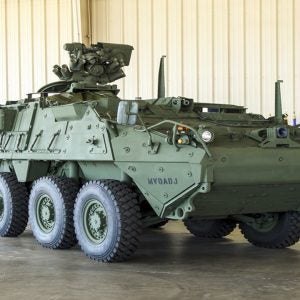Curtiss-Wright Leads Industry with New Initiative Supporting the US Army’s C4ISR/EW Modular Open Suite of Standards (CMOSS)
Curtiss-Wright’s Defense Solutions division today announced that it has begun an initiative in support of the new C4ISR/EW Modular Open Suite of Standards (CMOSS) defined by the US Army Material Command (Research, Development and Engineering Command) Communications-Electronics Center (CERDEC). The suite of open architecture industry and US Army standards included in CMOSS enable the reduction of C4ISR system size, weight and power (SWaP) and ensure commonality across multiple platforms by enabling the sharing of hardware and software components. CERDEC is actively working with the acquisition community to include CMOSS requirements in current and emerging programs. To ensure sustainment of the standards, CERDEC is actively participating in the associated standards bodies to address emerging requirements and technology. What’s more, CERDEC is collaborating with other services to align open architecture activities and enable procurement of common hardware and capabilities. CMOSS has been included in the Air Force’s Sensor Open Systems Architecture (SOSA) and has been aligned with the Navy’s Hardware Open Systems Technologies (HOST).
Curtiss-Wright is well positioned to support CERDEC’s efforts with multiple existing product lines already designed in compliance with CMOSS standards, as well as new technologies currently in development, that align with its objectives, including COTS-based rugged single board computers, Ethernet switches, TrustedCOTS™ trusted computing approaches, radial clock modules, data storage systems and power supplies. In support of CMOSS, Curtiss-Wright is working with CERDEC to define and mature the CMOSS standards by developing reference implementations within the converged architecture.
“CERDEC’s CMOSS suite of standards will help drive momentum in the embedded industry away from costly, complex proprietary solutions and towards COTS-based open architectures,” said Lynn Bamford, senior vice-president and general manager, Defense Solutions division.
“We are very excited to announce Curtiss-Wright’s support for the US Army’s CMOSS standards with a range of size, weight and power optimized open architecture subsystems. Using CMOSS, system integrators will employ true industry open standards to develop rugged COTS solutions to meet the Army’s critical requirements.”
The Benefits of CMOSS
The widespread adoption of CMOSS by system integrators in the US, as well as ‘Five Eyes’ and other Nato nations, will help move the implementation of C4ISR capabilities away from the use of costly and complex ‘stovepiped’ separate ‘boxes’ on individual platforms. The use of true open standards will make it easier and more cost-effective to upgrade capabilities or keep pace with commercial technology due to complex integration challenges, lack of competition, and proprietary interfaces. In many cases stovepiped systems consume more SWaP than is currently available, thus necessitating expensive and time-consuming vehicle modifications.
CMOSS Standards
The open standards currently included in CMOSS include:
- Vehicular Integration for C4ISR/EW Interoperability (VICTORY): provides network-based interoperability using to share services such as Time and Position
- OpenVPX: a hardware form factor for fielding capabilities as cards in a common chassis
- Modular Open RF Architecture (MORA): drives functional decomposition to share resources such as antennas and amplifiers
- Software frameworks: includes REDHAWK, Software Communications Architecture (SCA), and Future Airborne Capability Environment (FACE) to enable software portability







